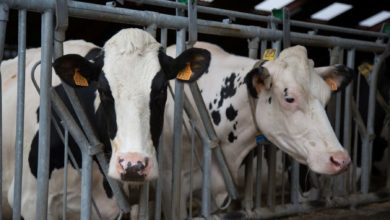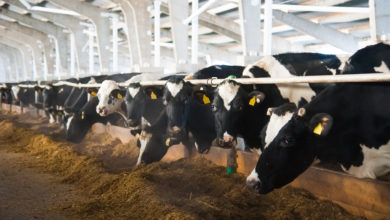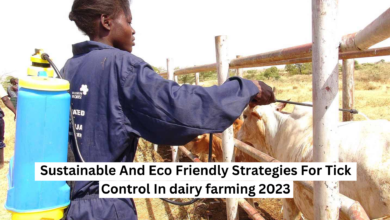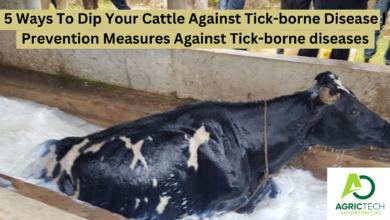The Quickest & Easiest Way To The Prevention And Treatment Of Worms For Layers And Broilers 2023
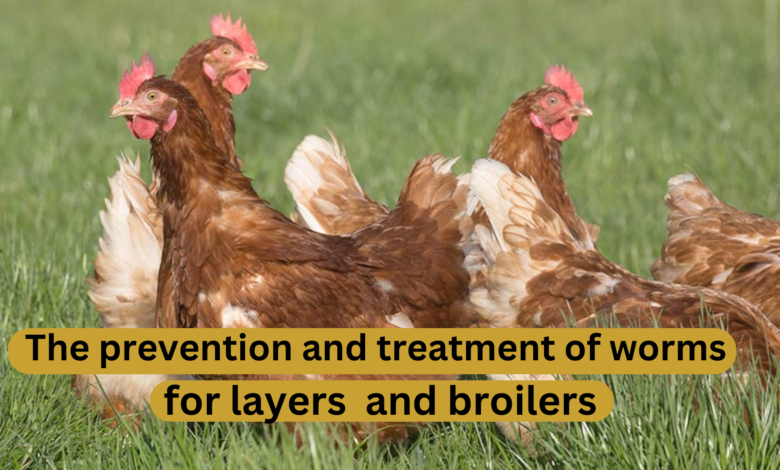
Host
Global Poultry Production
Target Audience
Poultry Farmers
Introduction
The Quickest & Easiest Way To The Prevention And Treatment Of Worms For Layers And Broilers- Nematodes remain a major problem worldwide, leading to lower production and fertility for egg-laying hens and broiler breeders. Broilers experience very few problems with pests. However, problems at the broiler level in the biological and ecological field are expected in the near future due to rearing systems and aging.
ALSO READ: Approved Method To Treat Bovine Mastitis In Dairy Cattle |Overview Of Mastitis| 2023/24
This article aims to give an overview of the most common worms found in parent stock housed in floor systems and how to deal with an infestation. It primarily focuses on prevention and preventive measures.
Classification
The most common worms in poultry are members of 2 taxonomic classes:
- The class of nematodes, which are the most important roundworms and include Ascaridia galli (large roundworm), Heterakis gallinarum (ceacal roundworm), and Capillaria spp. (hair worms).
- The class of Cestoda, which are the most important tapeworms and include Raillietina spp. (large tapeworms) and Davainea spp. (small tapeworms).
Location of adult worms
The tapeworm Davainea spp. colonizes the duodenum while small roundworms (Heterakis gallinarum) primarily colonize the caecum (Figure 1). Hairworms (Capillaria), large tapeworms (Raillietina), and large roundworms (Ascaridia) all colonize the small intestines.
Life cycle and prepatent period
Ascaridia galli, Heterakis gallinarum, and Capillaria obsignata have direct life cycles. The adult worm produces eggs that are excreted into the environment. Under favorable conditions (high humidity and temperature), the eggs embryonate to an infective stage. This embryonating period varies depending on the species. When an infective egg is taken up by the host, it will develop into an adult worm. The total period from egg to maturity to adult worm to the first egg is called the prepatent period. Awareness of this period is very important to devise a preventive strategy.
The length of the prepatent period is dependent on many factors including environmental conditions (humidity, temperature), availability of hosts, and challenge with chemicals (sanitizers, parasiticides). The shortest possible time based on optimal reproduction is always given for the prepatent period.
Pathogenicity
Tapeworms and hairworms cause direct damage to the intestinal wall. The large roundworm causes a catarrhal enteritis, with diarrhea being the primary symptom. The small roundworms cause little direct damage. All worms compete with the chicken host for nutrients through absorption. On the parent stock level, lower egg production, lower feed intake, and lower fertility will be the first signs of infection.
Histomoniasis (blackhead)
This infection is becoming more common due to the introduction of more ecological husbandry systems and the recent ban of effective drugs in several countries. The life cycle of this protozoal infection is direct, although it uses a carrier (protector) outside the host. The adult protozoa live in the ceca and can also migrate to the liver, causing ulceration in the ceca and necrotic foci in the liver.
Outside the host, the parasite dies very quickly. The parasitic nematode Heterakis gallinarum acts as a carrier of histomonas eggs, and earthworms can act as collectors and distributors of the eggs. Histomonas is eaten by Heterakis worms and is incorporated into the Heterakis egg, and when shed, the earthworm collects infected eggs. Since the Heterakis eggs are very resistant to most disinfectants, it can be difficult to clear an infected farm.
ALSO READ: Learn How To Start Beekeeping THE HONEY BEE
Metronidazole products are the most commonly used drugs to destroy protozoa. Chickens do not acquire immunity against Histomonas and, therefore, prevention must be based on elimination of the intermediate host: Heterakis gallinarum in relation to its prepatent period (24-30 days). In older chickens, the prepatent period tends to be long. In young chickens, deworming should take place every 4 weeks, and after 12 weeks of age every 5 to 6 weeks to break the life cycle of the Heterakis, contributing to the control of Histomonas.
Diagnosis of worm infections
In general, it is recommended to incorporate a worm check into the routine health program. Critical moments are transfer from rearing to production, first weeks after start of production, and around 40 weeks of age.
Postmortem examinations should be done on healthy flock members with normal feed intake. Infected birds that have not eaten for several days will most likely excrete a lot of adult worms, complicating diagnosis. As part of the exam, include a microscopic check of the small intestine and cecal content checking for worms and their eggs as well as coccidia.
Check the duodenum, jejunum and ileum of the small intestines and collect a surface sample with content from the ceca. For Heterakis, cut off the ceca top and squeeze a small amount of content on a slide. Place a second slide on top of the material and spread it into a thin layer. Adult Heterakis worms (if present) should be visible with the naked eye. In extreme cases, especially in the case of severe Ascaridia infection, big roundworms in the feces are a positive diagnosis. However, worms are not always present in the excreta even though a bird is infected.
ALSO READ: Your Key To Success: FISH FARMING (Aquaculture) 2023
Laboratory fecal examination at specific fixed ages is often practiced as a routine integration of the biosecurity control system. The frequency of this routine must be based on the prepatent period (from egg to larvae to adult to new egg) of infections within a region.
The number of droppings that are taken varies with the flock size, but in general, 40 droppings and 10 cecal droppings per house are sufficient. Mix the droppings into 2 samples. Centrifugation and flotation methods with solvents of specific gravity are the most commonly practiced. Some solvents may cause eggs from trematoda to become misshapen and, therefore, harder to identify.
Common solvents:
NaCL solutions with a specific gravity of 1.19 at 20°C
MGSO4 solutions with a specific gravity of 1.28 at 20°C
Therapy
Therapy must be divided into curative and preventive: The first to treat the infection and the second to prevent reinfection. A curative treatment should always be followed with a preventive strategy. Check with the manufacturer before treating breeders for parasites during the production cycle as significant drops in production may occur. Some soluble products may alter the flavor of the drinking water, making it bitter. The off flavor can reduce water intake and cause production losses.
Each facility should develop their own preventive strategy based upon local conditions and available medications. It is important to note that eggs in the litter and floor can never be killed/removed unless the litter is removed and the floor is being treated.
A good time for prophylactic treatment is just before birds are transferred from rearing farms to production houses. The treatment should be done at the rearing farm for a period where juvenile worms become adults and thus are susceptible to the treatments.
Worms using an intermediate host or a carrier can also be treated by eliminating the host or carrier. In case of Histomonas, the worm can be the carrier and must be eliminated.
For treatment and elimination, the use of drugs should be considered in conjunction with the following:
- Keep litter dry. Change litter if possible.
- In the cases where the worms have a host or carrier, eliminate the carrier.
- Start a preventive program that prevents egg shedding.
- Egg destruction/elimination should take place when the house is empty and can include:
- Floor-flame disinfection.
- Certain new disinfectants that claim to destroy nematode eggs. Check with the manufacturer for the effectiveness of chemicals against worm eggs.
- Applying salt to a wet floor. This saturated salt solution has a higher specific gravity, causing the eggs to float. After 12 hours, the floor is flushed of the salt solution.
- Ammonia disinfection, which is a very aggressive and dangerous method. Use extreme caution and follow local regulations on chemical usage.
ALSO READ: How To Start A Profitable Poultry Production For Broilers and Layers- Full Guide Overview 2023
Key preventive treatments:
- Replace litter with each new flock. Never place a worm-free flock on infected litter.
- Routine monitoring of fecal samples with treatments based on the results and prepatent period of the identified parasite.
- Set up a prophylactic treatment schedule based upon the prepatent period and elimination of the intermediate host.
Dr. Andre Derkx explains the most common worms found in flooring systems and how to deal with an infestation.
ALSO CHECK: 4 Ways To Increase Live Weight In broilers And Egg Size In layers
For more updates On Agric Tech Opportunities kindly join the social groups below:

